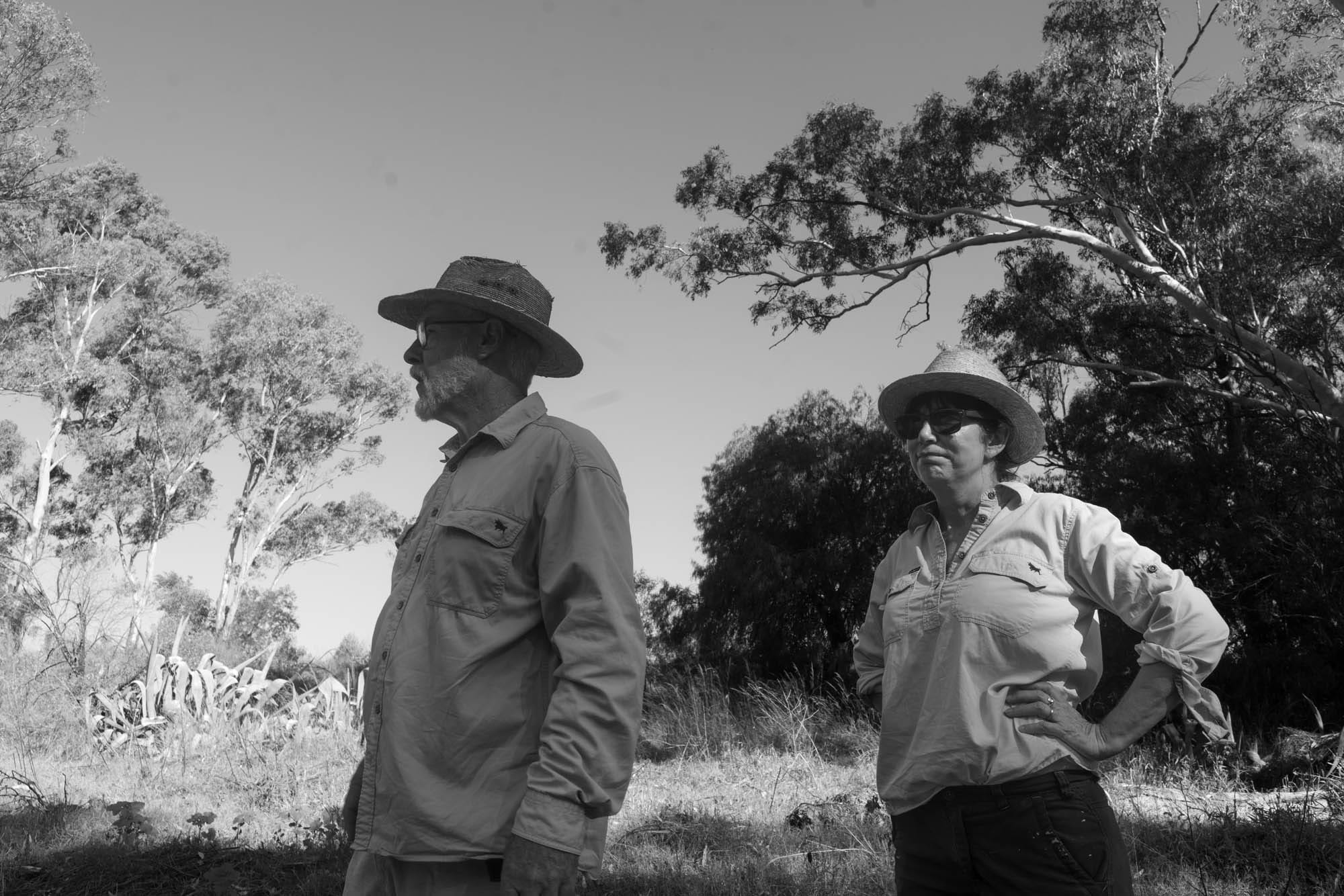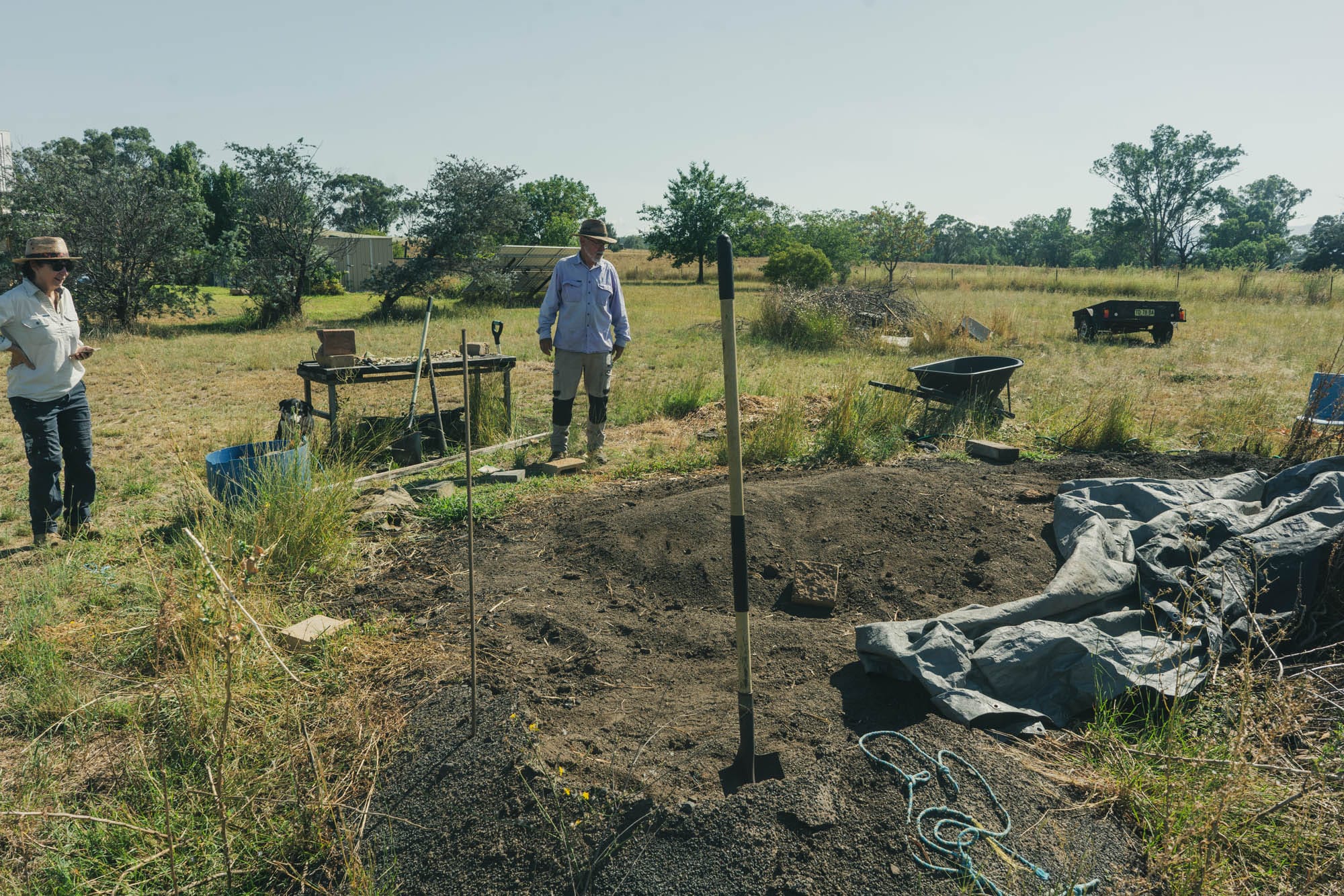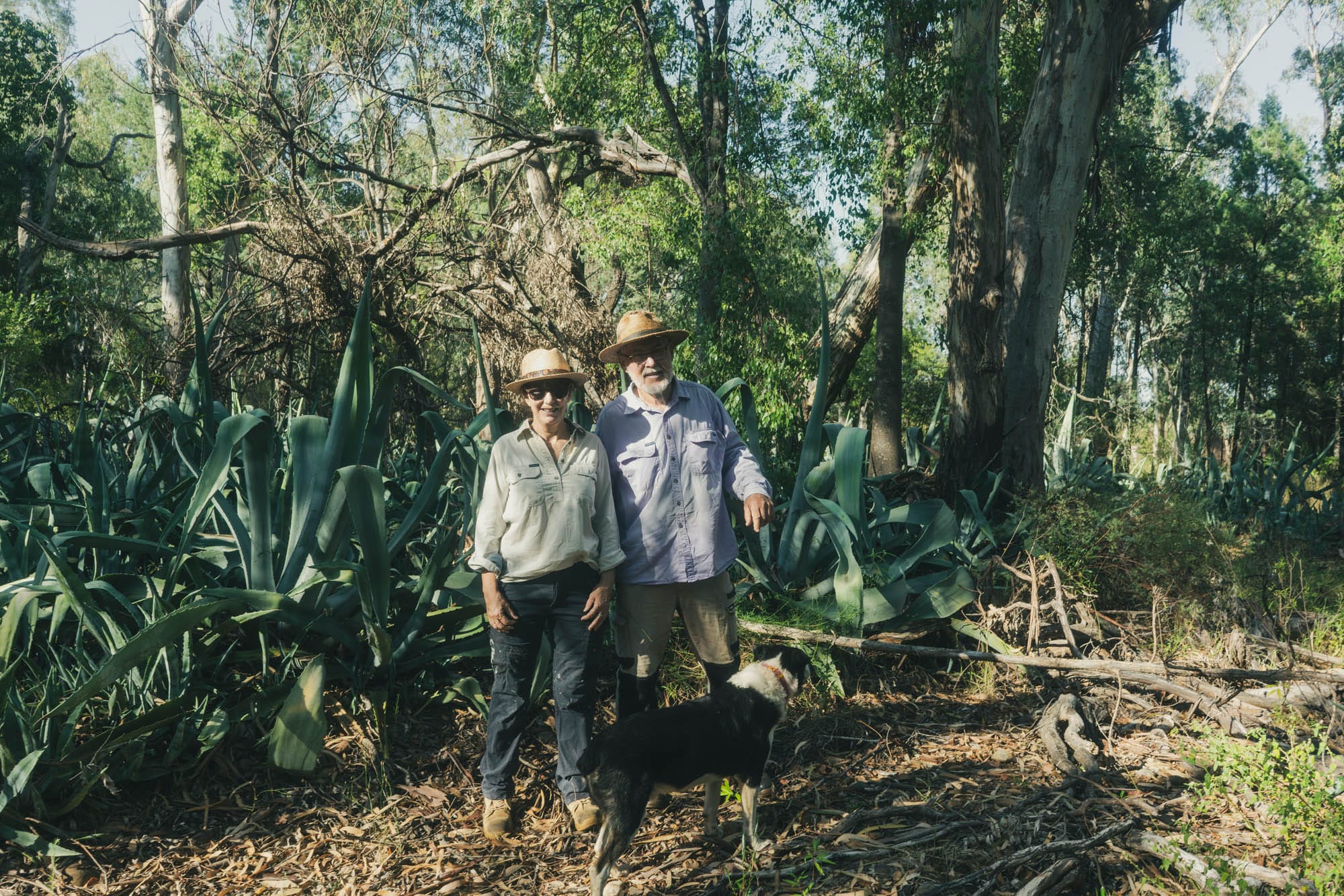Big news – five national finalists have just been announced in the #JustAddRHUBI Bartender Competition, each of whom will travel to Melbourne to compete in the final at at Runner Up Rooftop on November 18th, with the winner taking home $1,000 in cash, stock, and coverage in paid media promotion with Boothby.
Those finalists are: Tanguy Charbonnet (Jackalope, VIC), Quinn Zuo (Island Radio, NSW), Judith Zhu (Bistro Ebony, NSW), Elliot Pascoe (Golden Avenue, QLD), and Trinity Bird (Bouvardia, VIC).
Each finalist will present their original RHUBI Apéritif and Fever-Tree cocktail to an expert judging panel and a live audience of trade and industry guests, and they want you to join them — register your attendance at the Eventbrite link below.
The old, beat-up Holden ute looks like it’s about to die, but that just means it has another 10,000 clicks in it. For now, it’s parked atop the creek bank; below, the wire of the winch is drawn out, down and hooked around the fresh harvested agave americana on the sides of the creek bed; to get at it, the couple — partners in distilling and in life — trample over younger plants, wielding machetes, and hack at the saw-toothed spiky green leaves defending the heart of the plant, its piña, each blow striking at its sharp leaves; one errant swing and they risk the removal of one of their own limbs. To rip the piña from the earth and cart it away they crank the winch by hand, dragging the heavy piña across the ground, over the other plants, and up the riverbank to the ute.
They drag the 200 to 300 kilogram piña onto the tray of the ute. And then, they repeat the process under the baking hot sun.
“We reckon we’ve had a 400 kilo [agave] once,” says Rosemary Smith, who — with her partner Stephen Beale — owns Black Snake Distillery, the final destination for the harvested piñas.
There are no staff here, it’s just Rosemary and Stephen and a quixotic mission to make a mezcal that’s not mezcal, but rather an Australian agave spirit that’s all their own.
It’s hard work at the height of summer. “[We are] 100 percent of the labour. It’s difficult,” Stephen says.
That’s an understatement: it would be difficult work for fit young men in their 20s. It’s nigh on excruciating work if you’re older, past middle age. But it’s just what Rosemary and Stephen, now in their 50s and 60s, do for work.

Black Snake Distillery is about 10 minutes outside of Narrabri, in the north of NSW. To get to Narrabri from Sydney is a six hour drive — without taking a break. You head up through the Hunter Valley, through wine country, and coal country; over the Great Dividing Range, through the horse capital of Australia (Scone, if you’ve never been) and then keep driving for another three or four hours, where the landscape flattens out, and the road straightens, as you barrel along to Narrabri.
Along the way, if you take your eyes off the road, every now and then you’ll see clumps of agave plants along the side of roads, little outcrops here and there, some marking fence lines and letterboxes.
“After Murrurundi, and then before you got to Willow Tree, you went past that truck tracking station,” Stephen tells me, as we sit on the porch at Black Snake Distillery. It’s hot — it’s 36 degrees Celsius — it’s past 8pm, and I’m tired from the drive to Narrabri. “Along the railway line there are hundreds of americana,”
he says.
Narrabri is a town of just five and a half thousand people, a couple hundred kilometres from the Queensland border, and about 450 clicks inland from Coffs Harbour. An hour or two out of town you’ll see busload after busload of mining industry workers being ferried about. Narrabri, and the area around it, is mining country.
The distillery itself is tiny. It is in a small building on the same block as their home, and the earthen pit for cooking the agave sits out the back of the house. Stephen grew up 500 metres down the road from where he and Rosemary are today. “That light you can see over there was actually the family home which my father built,” he says. “It was in the 1960s — he actually built it, it was a kit home.
“When we lived there we could see one house — over there now there’s 30 or 40 houses.”
The agave americana plants they harvest grow on the lower banks of the creek that runs next to their property, a place Stephen has known all his life.
“We used to swim in the creek,” he says. “The quiote,” — the flower that grows from the centre of the agave plant, and which is sometimes cut from the plant so that energy is diverted to growing the piña to maximise the fermentable sugars — “we actually made rafts from them. They’re really light when they dry out. They wouldn’t last that long because they absorb water.”
The agaves have been there on the lower banks, growing in clusters — some small, some in groups of dozens or more — the whole time.
“I’m talking fifty years,” Stephen says. “They were already well established, they were just normal in my life.” He thinks the plants must have been there for at least one hundred years. “It might have been more than a hundred years, for them to be established by that time.” These plants have been growing, reproducing, spreading — they’re considered a weed in Australia — all his life, but it was only eight years ago they got the idea to harvest them.
The idea came from one of their daughters. After a trip to the US, she went to Mexico and hit upon the idea of turning all the plants by the creek into an Australian take on mezcal.
“She came back and talked about the idea of mezcal,” Stephen tells me. “Not just the drink, but the ethos of the thing.”
If you’ve been to Oaxaca or to any artisanal mezcal producer in Mexico, you’ll see some similarities between what the palenques do, and what Rosemary and Stephen are doing at Black Snake. Their production, for a start, is small — the copper still is 300 litres, their fermenters can hold around 900 litres; they talk about spirit runs that make 50 to 60 bottles. It’s a decidedly non-commercial operation, a far cry from the investor-backed and designed for export gin and whisky distilleries that opened during the Australian craft spirits boom of the 2010s.
Stephen had worked in middle management at an agricultural company into his 50s before being retrenched, then put in a stint in mining, before deciding that it wasn’t for him. Rosemary is a music teacher at the local Catholic school; when I arrive at their home, there’s a drum kit in a room that also serves as a de facto bond house for the distillery — Rosemary has been learning the drums, she says, so that she can teach a student at school, there being no other drum teacher for miles.

“We knew bugger all,” Stephen says. “We just started dabbling in it.”
Their early batches were inconsistent. Early experiments on a still Stephen built himself gave enough encouragement, however, that they went and sourced a copper still from HHH Distill in Western Australia, and picked up four as new stainless steel fermenters from a whisky distillery.
“And look, we certainly had some problems with taste,” says Rosemary. “We plodded along. I don’t think I was really happy with the taste of it — it wasn’t consistent and we really couldn’t work out what was going on. So looking and reading and talking a lot, I convinced Stephen, bless him, to [cook the agaves] pit-style. I think I must have pestered so much. Stephen dug a pit, literally, all by himself.”
“It’s just a hole in the ground,” Stephen says. “And [people] say, did you dig this by hand? And I say, don’t be stupid — I used a pick and a shovel.”
Jokes aside, things have come on a stretch. Cooking the agaves in the pit helped, as did moving from stainless steel fermenters to wood; they’re also experimenting with wild yeast fermentation. The result? The liquid has been improving, says Reece Griffiths, the group bars manager for Solotel and founder of Agave Cartel.
“I had reached out shortly after I first started to import agave spirits and was setting up an online store,” Reece says. “I was super intrigued by what Rosemary and Stephen were doing and really wanted to check out the liquid.
“I was pretty skeptical having tasted a bunch of local agave spirits that weren’t really doing things the right way, and those products suffered because of it. What I loved about the approach at Black Snake, was that they were doing things in a very traditional way. From that point, Rosemary would send samples for feedback and I got to see just how the spirits evolved over time.”

Agave americana is one of more than 200 different agave species, native to Mexico (and parts of America that used to be Mexico), that have been used to make mezcal.
Agave has been growing in Australia for at least a hundred years, Stephen says — there are around 100 species here according to some. It grows in Queensland and NSW where it is considered as a weed; in addition to the agave americana, Rosemary and Stephen also make an ensemble-style agave spirit from wild growing agave angustifolia they harvest in Emerald in Queensland, 1,000 kilometres away.
But how did this ‘avenue of agave’ as Rosemary describes it, come to thrive on the banks of the creek Stephen grew up playing in?
“One presumes that what happened is, 100 years ago, one plant got somehow established here, or maybe more than one, but then they just spread,” says Stephen. The plants live for around 20 years, he says, repopulating close by. They likely ended up here, carried along the creek during peak flow from someplace upstream. At places further down the creek, Stephen says, they’d been carried there by a flood. “There’s more 200 to 300 metres off the creek,” he says, but they must have been there for quite a while — he doesn’t remember the creek flooding in his lifetime.

Sitting on the porch, cicadas whirring away, as lightning hundreds of kilometres away lit up the sky, I talked to Rosemary and Stephen, and sampled a number of the spirits they make. I’ve had a few Australian agave spirits before, and haven’t thought much of them. The spirit is often less than well made — to put it charitably — and they lack flavour and concentration.
The spirit I taste at the distillery, however, isn’t that. There’s some wild variation in how different products present; one, a new batch of their joven, is almost tequila-like in its agave-forwardness and fruitiness, clean and approachable. Another, a new batch of pechuga — made with kangaroo meat and assortment of botanicals — is more expressive, more reminiscent of quality mezcal; it wouldn’t look out of place in a lineup of spirits at award-winning Sydney micro mezcal bar, Cantina OK!. The ensemble I try — a fifty-fifty blend of their americana and angustifolia from Emerald, is floral and pretty with orchard fruits (and a healthy 50 percent ABV). There’s a pepperiness to a few of the samples — I guess that’s something of a house marker — and they seem to be getting the balance between spirit character and flavour right. They’re not mezcals, nor should they be — they come from a different time and place.
There has been a boom in tequila across the last decade; in some bars, the agave stuff outsells the great white spirit duo of gin and vodka. The Margarita is having another moment.
Mezcal is coming along, too, but thanks to its variability across producers, and the fact that the small scale, artisanal stuff is often challenging to those unfamiliar with its charms, much of it remains a mystery to a wider audience. Black Snake isn’t making a mezcal, per se — that can only be made in Mexico. They’re not making tequila — that requires the blue agave and, again, to be made in those parts of Mexico where it is allowed.
Which makes one wonder — just what are they making, and how do they explain it to the public?
“We have a cellar door and of the people who come there, 90 percent have never heard of mezcal,” says Rosemary. “So when I talk about mezcal, I talk about jazz.
“There’s lots of different styles and you like it or you don’t. It doesn’t mean it’s wrong.”
And there’s something to jazz as a metaphor for how they’ve gone about teaching themselves to make agave spirit in the ethos of mezcal. They have been improvising all along, Rosemary says. And when you’re improvising, you might make a mistake. “But you’re only one sound away from making the right mistake,” she says.
And as Stephen says: “We are still, in a way, learning. The Mexicans have had 500 years.”

Back at the distillery after an early morning visit to the agaves growing wild along the creek, we take a look at what they’ve planted on the property itself, and Rosemary talks about the future. Some of these will take at least six years to mature, some others even longer. They’ve got americana there, angustifolia, as well as some blue weber agave. Some salmiana is on the way.
This is what sets agave spirits apart from other agricultural drinks. With wine, you get to harvest the grapes each year. The grain for whisky grows twice a year. But agave, depending on the variety, takes at least six years to mature — they harvest the americana growing in the creek only after 15 years of growing — and once it’s harvested, that’s it. There’s no second life, no annual harvest.
Which begs the question: will Rosemary and Stephen be here to see these recently planted agaves ripen?
“We came into it late,” Rosemary says. “There will be a time when Stephen and I have to stop this.
“I guess ultimately, sadly, this will be sold. And to have crops that are three quarters mature of different agaves other than your Americana and...”
Rosemary moves quickly to the next topic — sourcing some seeds for another agave variety — and we don’t return to the subject of what will happen when they can harvest no more.
For now, though, there is angustifolia cooking to attend to, online orders to dispatch, and the next agave to identify for harvesting.
There’s far too much work to do.
Big news – five national finalists have just been announced in the #JustAddRHUBI Bartender Competition, each of whom will travel to Melbourne to compete in the final at at Runner Up Rooftop on November 18th, with the winner taking home $1,000 in cash, stock, and coverage in paid media promotion with Boothby.
Those finalists are: Tanguy Charbonnet (Jackalope, VIC), Quinn Zuo (Island Radio, NSW), Judith Zhu (Bistro Ebony, NSW), Elliot Pascoe (Golden Avenue, QLD), and Trinity Bird (Bouvardia, VIC).
Each finalist will present their original RHUBI Apéritif and Fever-Tree cocktail to an expert judging panel and a live audience of trade and industry guests, and they want you to join them — register your attendance at the Eventbrite link below.












